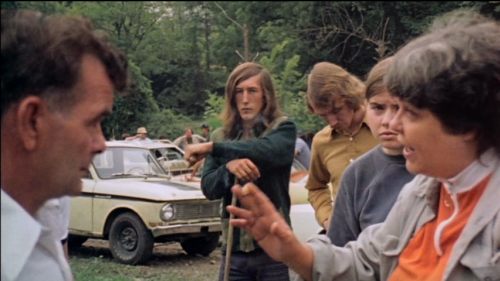1976, TSPDT Rank #675
There's a tendency to take the term "documentary" at face value and look at documentary films as "documents" or "records". Most documentaries, however, will show that the line between documentaries and narrative films is not so clearly demarcated. In Harlan County, U.S.A. for example, Barbara Kopple shaped over a year's worth of sporadic documentary footage into a narrative about the long labor strike in a Kentucky coal town, a narrative which makes us feel that we are witnessing the core truth at the center of an extended historical moment. This is what the best documentaries do, although maybe the only major difference between the preparation of narrative films and documentaries is that the latter takes more planning after the footage is shot rather than before, while during the shoot, the main objective is to be in the right place at the right time.

For whatever reason, perhaps to allow us to see what effect the passage of time had on the miners' strike efforts, Kopple often left time gaps of multiple months between strike footage, with the biggest focus being given to the final months of the strike, as we start to see the miners' life become more endangered, while at the same time the miners start to see a light at the end of the tunnel. The gaps between footage are occupied by skillfully situated interviews about the history of coal mining labor conditions and past conflicts in Harlan County, along with segments on the corruption within the United Mine Workers of America, whose contract the Harlan County mine workers fought to get their employers to sign. While Kopple put a largely positive spin on the miners' long fight for better pay and more rights, the focus on union corruption suggests that the fight is never over for the American working class.

In any case, this Oscar-winning film is a great study in the methods that documentary filmmakers use to construct a narrative out of their material. There's a marked difference between a film like Harlan County, U.S.A. and a primetime news report. The careful mix of contemporary interviews, cinema verite footage, stock footage and potent folk music written about inhuman mining conditions and the long struggle for mine workers' rights is the mark of a filmmaker who saw a story that needed telling and spent years crafting it in a way that would resonate with audiences both in the moment and for decades to come. With this in mind, the line between a great documentary and a great narrative film is not all that pronounced after almost 50 years of hindsight. Although the fact that in capturing the miners' story, Kopple and her crew also became involved in their struggle, gives the film an added energy and a feeling of unvarnished reality that only a good documentary can provide.

No comments:
Post a Comment